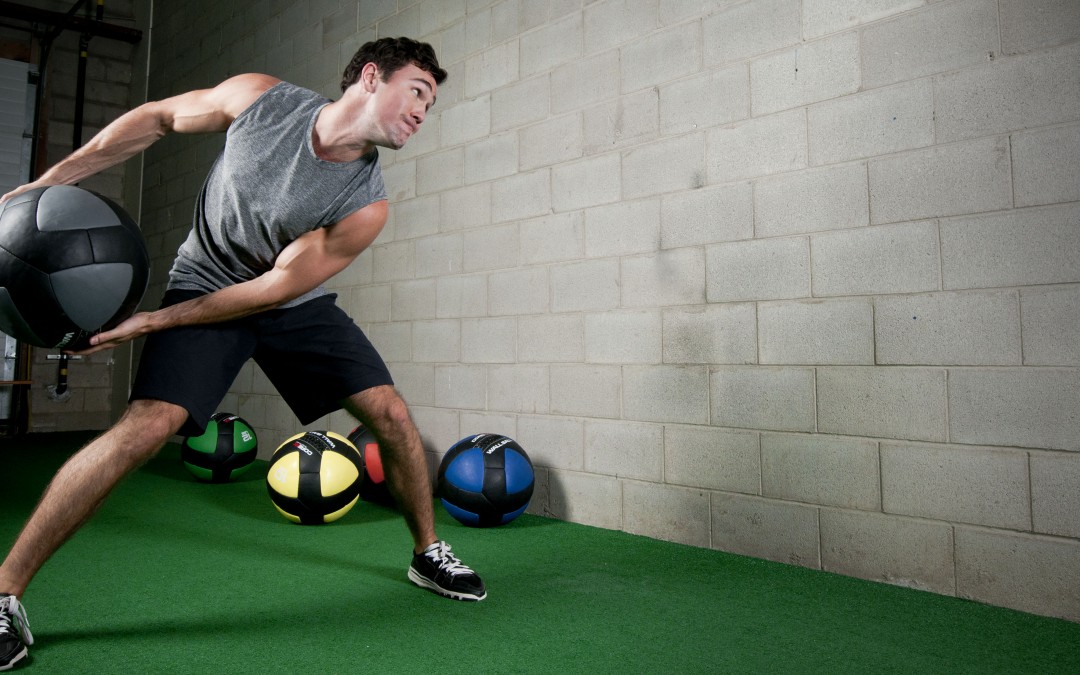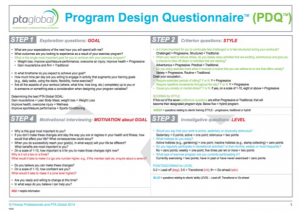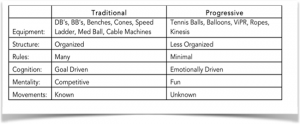by Ian O’Dwyer | Date Released : 17 May 2016
I recently presented four days with Tom Myers of Anatomy Trains, in Sydney (AU) and Auckland (NZ). Our workshops were directed at 1) merging the power of “hands on” and movement, 2) identifying and enhancing relationships with clients and 3) creating the optimal experience for the client. The workshops were titled Body Play and attracted various types of professionals: doctors, physical therapists, chiropractors, osteopaths, massage therapists and personal trainers.
What was fascinating to witness was the participation of all attendees in various drills and challenges that incorporated Play. Many of these professionals had not moved in this manner for many years, if at all, and they all had the opportunity to observe instead of participate. They had various styles of movement, levels of skill and fitness, and differences in age but all participated readily.
Our tools were varied due to our environment, as the workshop was held in a large bare room, so we adapted using volleyballs, tennis balls, sand bells, balloons and rubber bands. The participants were challenged singularly, with partners and in groups and the outcome was always the same; happiness, freedom and connection.
Within minutes, all in the room were experiencing the power of Play. The whole group were talking, laughing and feeling alive; wanting to interact and participate in every activity. Having such a diverse group is very powerful for building relationships!
Learning Objectives:
- Learn how to identify each client’s preferred social and movement style.
- Understand the three movement styles: traditional, hybrid and progressive.
- Discover the purpose and applications of Play.
- Become familiar with various types of Play.
I have witnessed this many times in the 20 years travelling the globe performing these workshops. It is obvious to me, and many others, that people need to play and we, as fitness professionals, must understand how we can best implement Play into their programs and lives.
Style
Every client has a preferred social and movement style and if we want to connect with them and optimize their experience, it is crucial that we can identify this. PTA Global has developed a tool that enables trainers to glean this information in a very quick and non-invasive manner called the Program Design Questionnaire (PDQ). The PDQ was designed by PTA Global Co-founder Bobby Cappuccio, and asks effective questions combined with an easy “tick the box” system enabling the trainer to listen and observe the client’s answer.
It is one of the most powerful tools I have experienced in any industry. The quality of information that is available to the trainer is incredible, but, more importantly, it allows the client to speak and the trainer to listen. Initiating a sense of client centric relationship can be extremely powerful; they are the centre of the relationship.
The PDQ covers Goal, Style, Level and the Motivation about Goal. Due to the amount of “smarts under the table” we are going to focus on Style for this article and I am going to simplify the process even further by using only three questions. This enables the questions to be asked each session whilst doing some movement preparation. Remember, a client’s movement style can change daily dependent upon their stress levels.
Below is an example of the PDQ. If you would like to download a copy to implement with your clients, click the links below the image.
Download the table version of the PDQ
Download the report version of the PDQ
PTA Global defines three movement styles; traditional, hybrid and progressive (functional). By asking and observing, it is quite easy to manipulate all of the movements in Play to match your client. This allows them to move in a manner which they are comfortable but, most importantly, enjoy. Here are the questions:
When you exercise, do you prefer:
Q1 structure of freedom?
People who like very structured exercise are typically traditional. People who like to have constant freedom in their exercise are progressive. People who like a little of both then you are a hybrid. These this can change based upon the client’s stress levels!
Q2 routine or variety?
People who love doing the same exercises on the same day (chest/arms on Monday, back/legs on Wednesday, shoulders/abdominals on Friday) is more traditional people who like to work the body or parts on various days are more progressive. If people are half and half, they are hybrid.
Q3 practical or adventure?
Some people prefer to have a very specific and practical purpose for every movement and they would be more the traditional style. Others prefer to go on an adventure with their movements and exercise without needing a practical reason and these are more the progressive style. People who enjoy both once again you are more of a hybrid style.
If you are uncertain of a client’s style after asking the questions below, my advice would be to consider them a hybrid (most people are). You can then progress or regress their style by simply asking a couple of questions at the completion of the challenge; “On a scale of 1-10, 1 being low and 10 being high on enjoyment what would you rate this challenge?” If they answer 6 the next question would be, “How could I make it a 7 for you?” This empowers them to give feedback but, more importantly, give input to their outcome and goals.
Greater clarity of how the clients want to move assists in creating the environment they enjoy. Enjoyment increases likelihood of continued training and achieving their goals because of the effects on their tissues and motion. The majority of clients will float along the traditional to progressive continuum; understanding how to manipulate is the key to meeting their needs.
The Why
When I started implementing Play in my studio in Noosa in late 2000, clients would look at me as if I was on some sort of illegal drug, as this certainly wasn’t what traditional personal trainers did. My trainers and I used to do all sorts of “stupid” things (Play) in our sessions with each other, standing on swiss balls for as long as we could (10.30mins was our best), racing challenges on the rower machines (100m, 500m, 2000m, that was painful!) and also playing inside lawn bowls with limes and lemons that clients would bring in for us to eat. We were big kids at heart and our clients loved that.
Of course this then filtered into the client sessions in far less extremes. When I turned 40, the clients and trainers gave me a huge amount of balloons, 40 in fact, of which I couldn’t bear to burst and dump so we started using these as ways of challenging the clients; movement preparation, metabolic challenges and recovery. The clients just loved them.
What started as fun, combined with human behavior, has now become a huge and important component of the fitness industry. Since 2006, when I first started teaching Play and Games globally, there has been conclusive research surfacing. Dr. Stuart Brown, author of Play How it Shapes the Brain, Opens the Imagination, and Invigorates the Soul, and John Ratey, author of Spark, are two that have invested huge amounts of time and money to show the importance of Play in society and how it affects the brain and also connects communities.
As early as the 1500s there is record of early settlements playing; kids, adults, singles, partners, groups, with or without tools or toys. This is something that has helped the evolution and development of the human as well as to create enjoyment and a sense of safety and belonging. It certainly isn’t something new!
When I started implementing Play in my studio in Noosa in late 2000, clients would look at me as if I was on some sort of illegal drug, as this certainly wasn’t what traditional personal trainers did. My trainers and I used to do all sorts of “stupid” things (Play) in our sessions with each other, standing on swiss balls for as long as we could (10.30mins was our best), racing challenges on the rower machines (100m, 500m, 2000m, that was painful!) and also playing inside lawn bowls with limes and lemons that clients would bring in for us to eat. We were big kids at heart and our clients loved that.
Of course this then filtered into the client sessions in far less extremes. When I turned 40, the clients and trainers gave me a huge amount of balloons, 40 in fact, of which I couldn’t bear to burst and dump so we started using these as ways of challenging the clients; movement preparation, metabolic challenges and recovery. The clients just loved them.
What started as fun, combined with human behavior, has now become a huge and important component of the fitness industry. Since 2006, when I first started teaching Play and Games globally, there has been conclusive research surfacing. Dr. Stuart Brown, author of Play How it Shapes the Brain, Opens the Imagination, and Invigorates the Soul, and John Ratey, author of Spark, are two that have invested huge amounts of time and money to show the importance of Play in society and how it affects the brain and also connects communities.
As early as the 1500s there is record of early settlements playing; kids, adults, singles, partners, groups, with or without tools or toys. This is something that has helped the evolution and development of the human as well as to create enjoyment and a sense of safety and belonging. It certainly isn’t something new!
Published research by Dr. Stuart Brown (2009), defined that Play wasn’t only fun, but essential for people to participate in, as it stimulates various regions of the brain critical for everyday challenges. Play also has showed extremely strong links to helping prevent or slow diseases like dementia and Alzheimer’s.
Three regions that Brown (2009) reported on were the:
- FRONTAL LOBE will improve efficiency in motor control, rationale thinking and personality.
- TEMPORAL LOBE is responsible for memory and emotional regulation.
- CEREBELLUM is critical if it is down regulated as it effects equilibrium, motor learning and posture. (pp.32-42)
According to Brown (2009) in his book Play How it Shapes the Brain, Opens the Imagination, and Invigorates the Soul, there were 5 properties that Play were based around.
- PURPOSEFUL; All PLAY has meaning and reason, even if we don’t know it.
- VOLUNTARY; PLAY is a choice, not required or obligatory.
- FUN; PLAY is exciting, arousing, and alleviates boredom.
- FREEING; PLAY frees us from the constraints of time, self, and rigidity – it’s adaptive.
- COMPELLING; PLAY makes us want to keep doing it – we don’t want to stop. (p.19)
It is incredible to observe clients as they come in for sessions in high sympathetic (stressed) states. Introducing a known challenge or game they have experienced prior and enjoyed, changes their whole energy; it invigorates their parasympathetic systems. Some of the many amazing outcomes I have witnessed through Play include;
- Children with learning difficulties start to improve their grades.
- Aged who struggle with decision making become more confident.
- Elite athletes straining with constant pressure of improvement enhance their performances.
- Cereal Palsy clients achieve challenging tasks more effectively.
- Mum’s and Dad’s communicate with each other again.
- YOUR business becomes incredibly sustainable.
Application
When you activate your observations skills (eyes, ears, touch, gut) you will notice many ways that Play surrounds us daily. Below in Image 2 you will see Sophie (my 2-year-old daughter) planking on two rocks. The difference was that she was trying to “move” one of the rocks and was laughing and pushing her heart out! She tried this many times; obviously it was fun or she would not have continued to try.
The Group Hybrid drill (Image 1 below) was great as it is in an environment where I had clients of varied styles and levels, due to the body position (sports position, very traditional) but throwing something that was filled with air and made of neoprene (traditional tool – wahu ball). All of the clients were committed to the game and loved it. It was a great way for me to de-stress and also observe how clients moved.
The Group Progressive protector drill (Image 3 below) is an advanced challenge that can drive a strong metabolic response. This involves 4 people working together and can be done with elite athletes, kids or the aged; the threshold of intensity they work in is driven by them. In this drill I was the person being protected and I was guiding my two team mates (who aren’t allowed to think) in the direction so that the outside person (tagger) wouldn’t be able to tag my butt. This lasted 15 seconds then we changed roles until we all had experienced each position.
The Partner Hybrid (Image 4 below) drill includes two people that are creating a constant pressure with a body part (in this case hands touching) whilst performing a challenge. The idea in this challenges is to step laterally within your threshold whilst at the same time maintaining a consistent and constant pressure with each hand, not allowing the pressure to pulse or drop when you move. If the pressure isn’t constant, then regress the distance in which you step until you can maintain the pressure.



